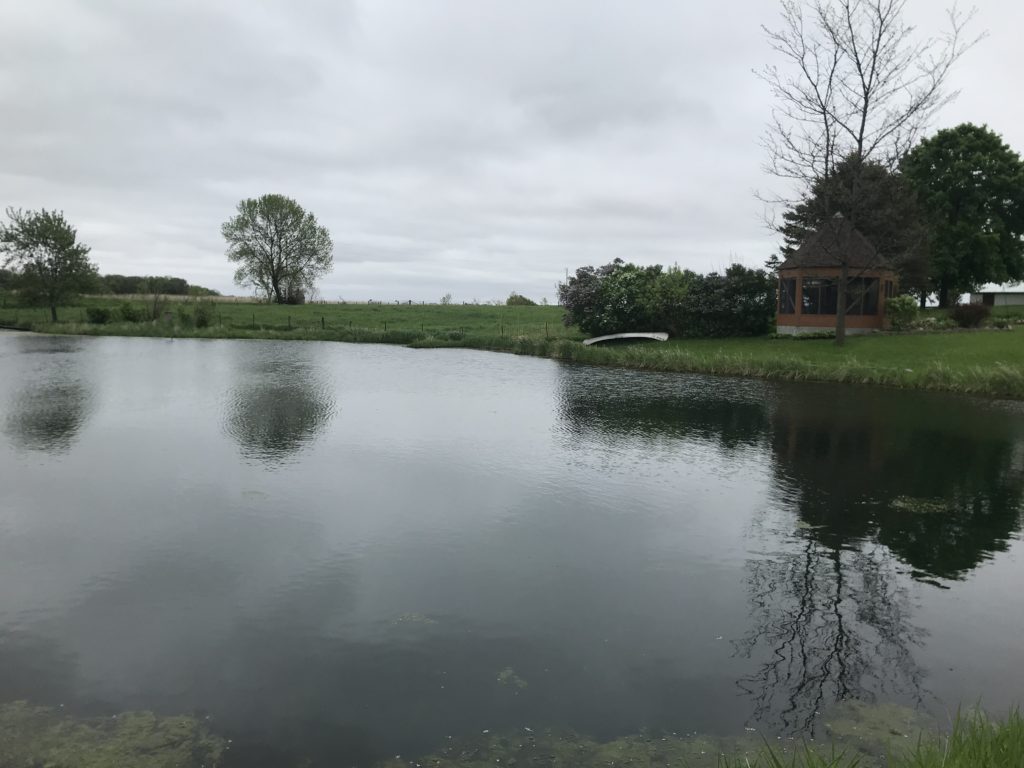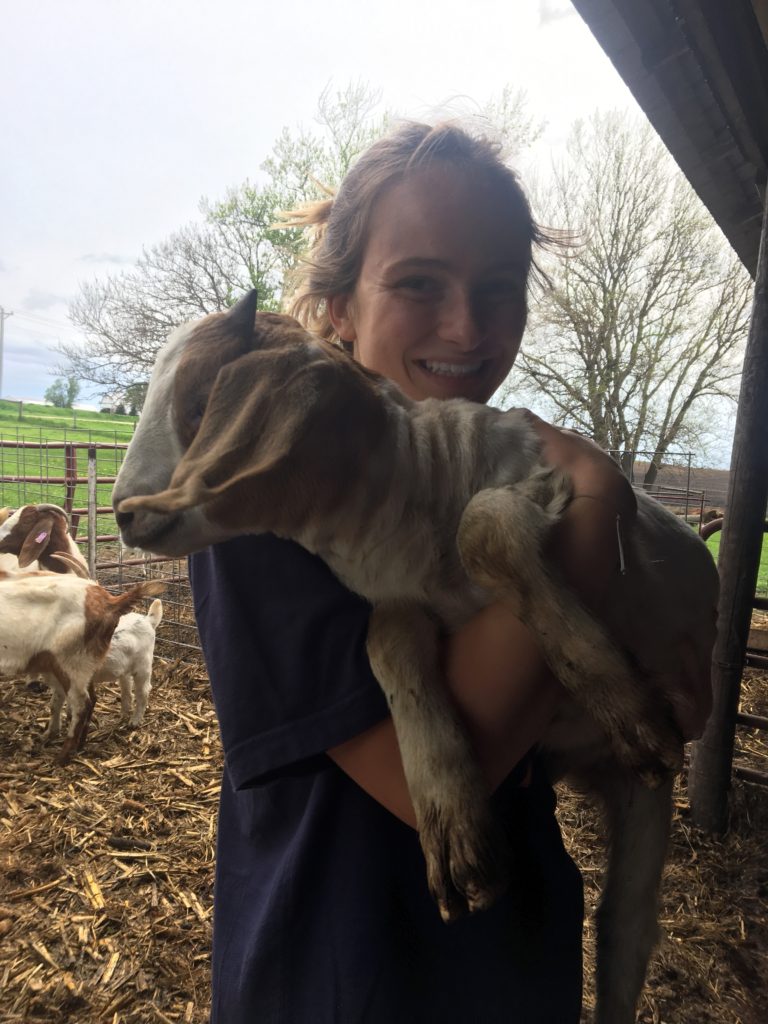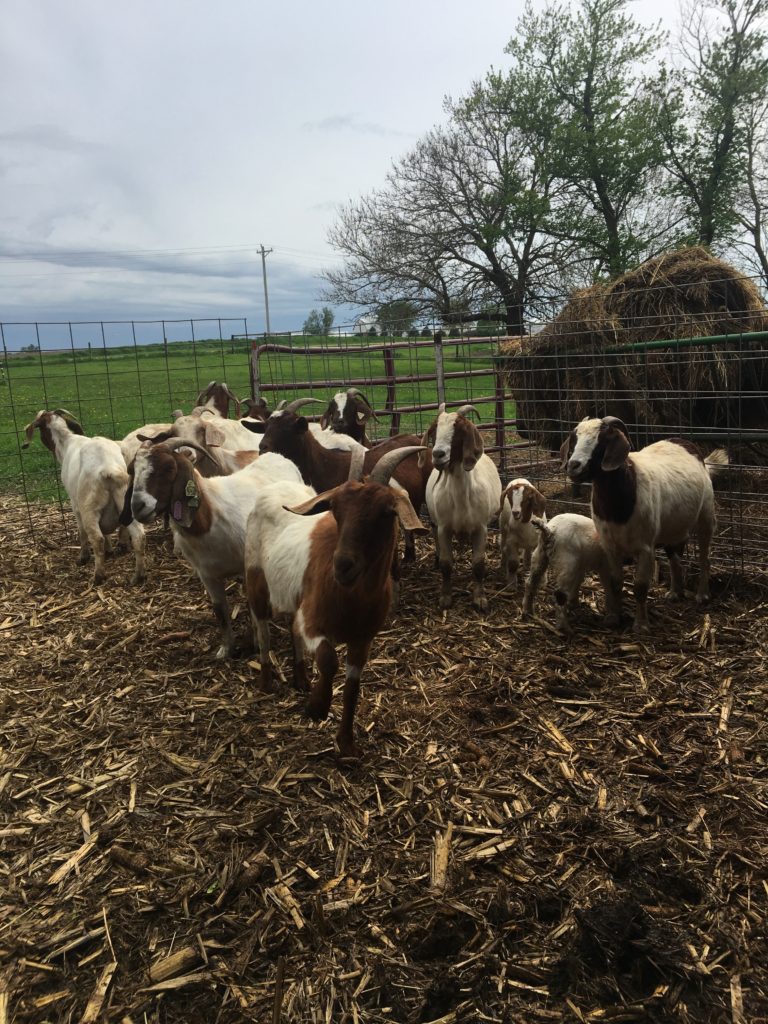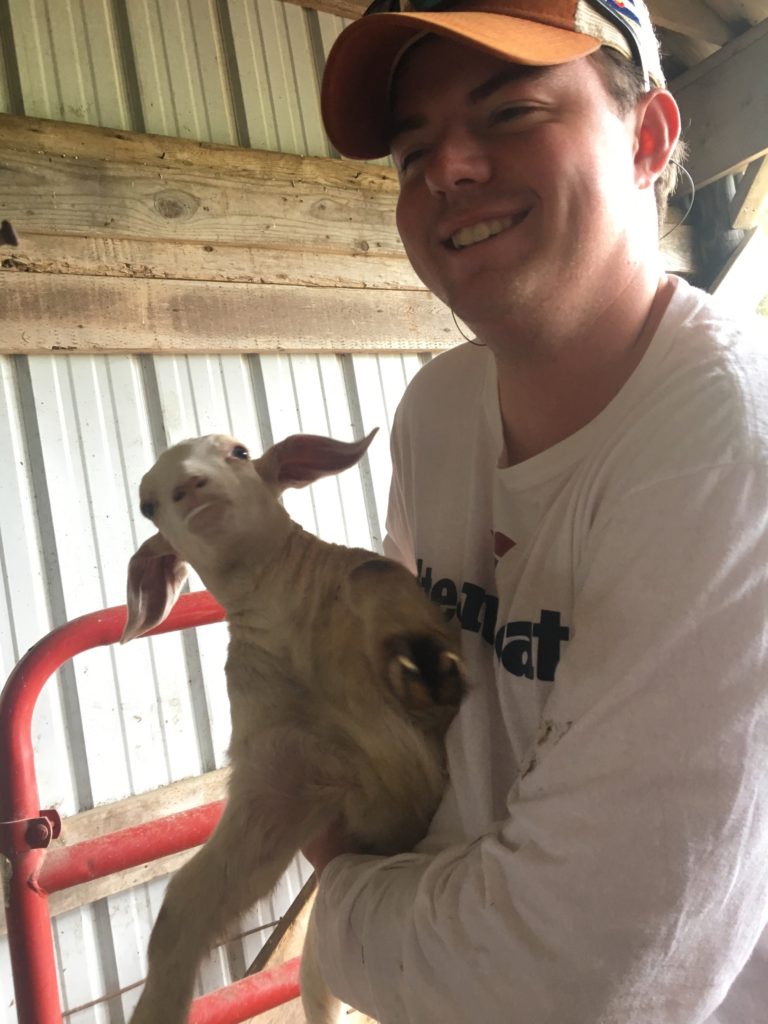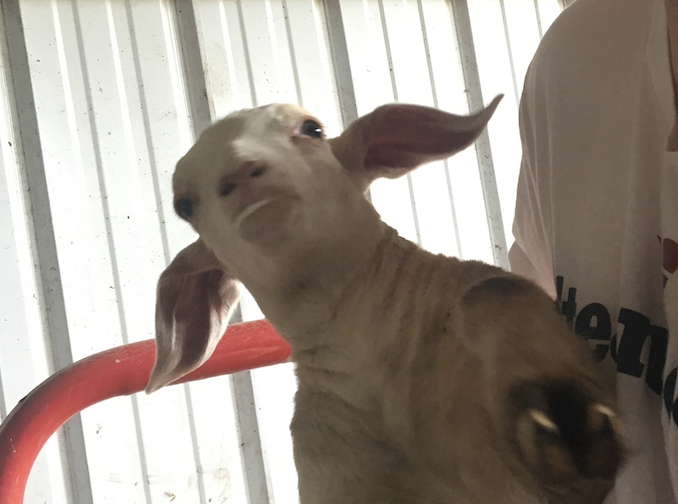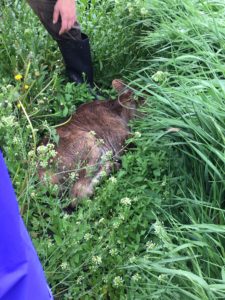Farming is a risky business, in more ways than one. Not only is it the 8th most dangerous occupation, farming is can be financially or even socially risky. To explore some of these risks, we met with Mitch Meyer and Renae Zoske who are both crop insurance agents and also farmers. Mitch and Renae market and sell crop insurance products for five of the 15 AIPs (Approved Insurance Providers). Crop insurance is a public-private venture, all working together to spread risk across companies and the US government.
Farmers need crop insurance because crop yields are affected by so many things that are out of his/her control. Bad weather, late planting due to weather and hail are just a few of the problems that can effect crop yield and break a farmer without insurance.
Later that day we met with a farmer who is taking both financial and social risks. Heath Stolee is growing chestnut trees in an area known for its corn and soybeans. This may seem nutty to his neighbors, hence why he calls his farm, Nutty Farmer Chestnuts. Being a chestnut farmer means that Mr. Stolee does not see yields immediately like a corn or soybean farmer. It can take 10 years or more for his chestnut trees to start producing marketable product. A bad weather event in which part of the crop is damaged could set this type of farmer back years.
There is also insurance available for tree farmers, although it is not provided through crop insurance sold by Mitch and Renae. Farmers like Mr. Stolee can apply for TAP (Tree Assistance Program) or NAP (Non-insurance Crop Disaster Assistance Program). TAP will cover trees that have not started producing, and NAP covers trees that started producing. Although there are these protections in place, planting new trees to replace damaged trees also will set back a farmer valuable years.
These are all risks one must consider if they can even find a way into farming. The average age of a farmer is currently 60 years old. Young adults either do not have the money to fund a farm start-up or do not want to accept the risks (Imhoff mentions this in his Citizen’s Guide to The Farm Bill). This makes it all the harder for young people to be involved in an aging occupation. There are still beginning farmers though; Heath and Brian (who we met on Friday) being two. For example, Heath Stolee found his way into farming through family connections. It is not uncommon for farms to be rented off for others to farmer besides the owner. In Mr. Stolee’s case, this was about to happen to his family’s farm if he had not taken up the offer to farm it. Mr. Stolee felt that it was his last chance to farm. If he had refused he may not have able to get into the farming business later. A similar scenario is that of Brian Wosepka. Mr. Wosepka had a family farm of 100 acres. Farming this land with conventional methods did not make sense to him because it would be costly while offering little profitability. This seemed like too much of a risk, and he was unable to see a beginning in farming using conventional methods. That is until he heard Joel Salatin speak about his farming methods he employs on Polyface Farms in Virginia. However, the Farm Bill has started some programs to help beginning farmers. I think Mitch and Renae would be supportive of this because they mentioned that getting into farming needs to be made easier.
Talking about risks, negotiating a 12 passenger van down a dirt road after it has rained is an unexpected risk of farming. Apparently, farming is just chock-full of risks.
To end the day, we watched King Corn, a film about two men who grow an acre of corn to see where corn originates and where it ends up. Corn is a main ingredient in so much of what we eat. We consume so much corn that it is now a part of our DNA. As the saying goes, you are what you eat. In our case, we are all corn.




